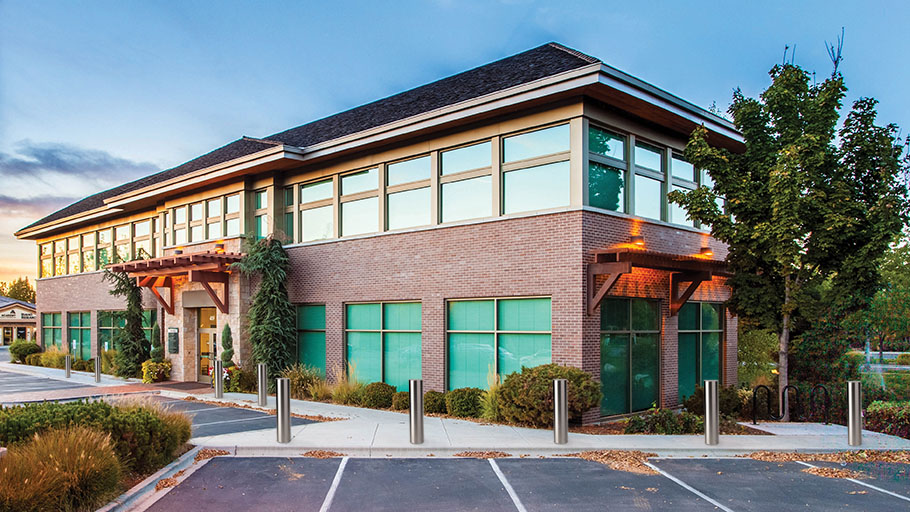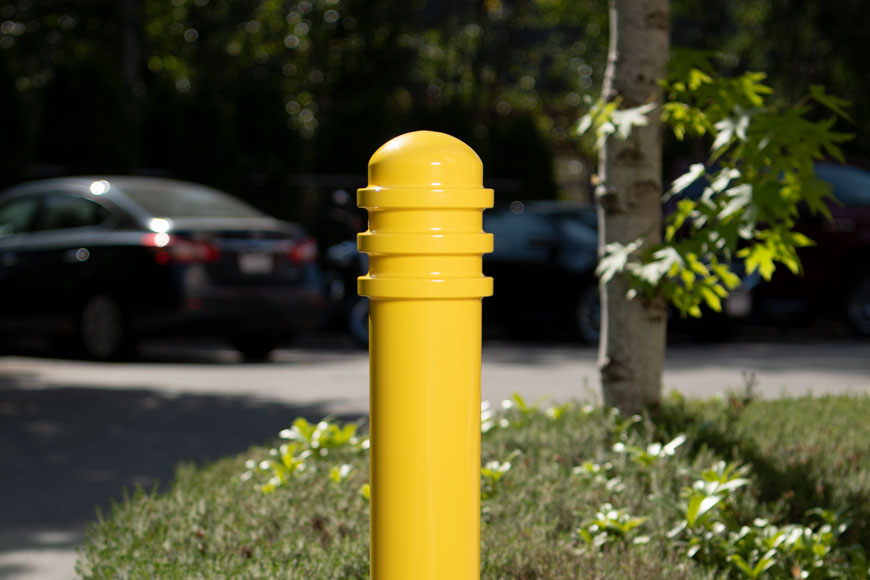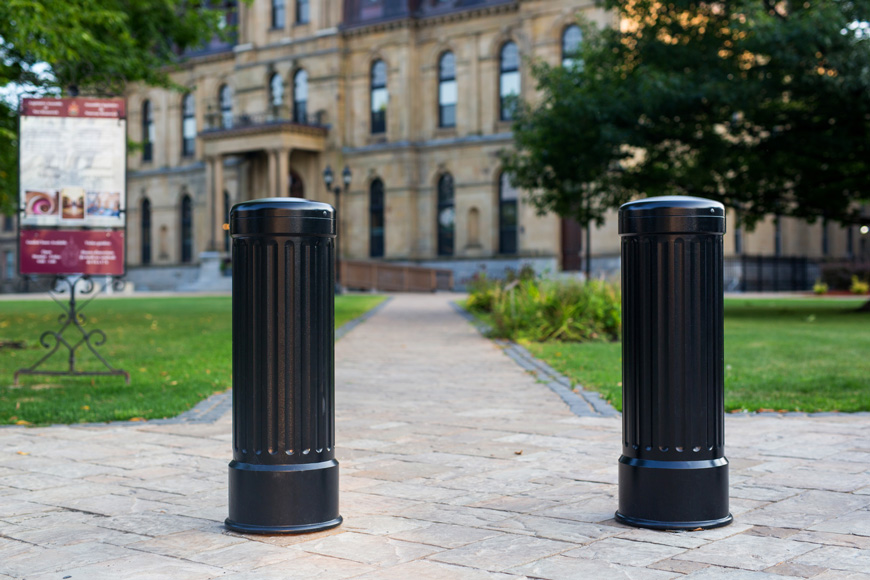Bollards for loading bays, perimeter security, and on the factory floor
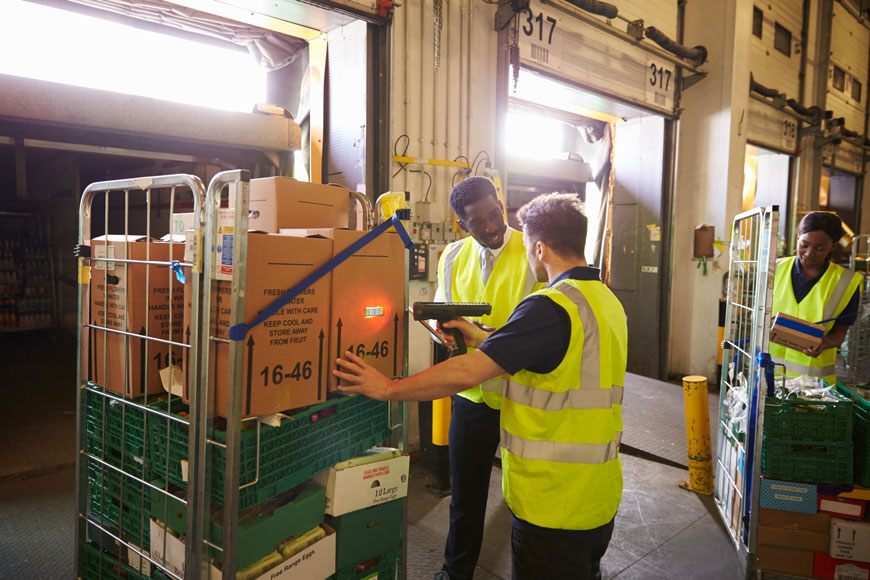
Warehouses, factories, and other large industrial properties are complex high-traffic locations. Every day, many people stream onto the site. They arrive in heavy-duty trucks, employee vehicles, or by active transport means. Inside the large buildings, different machines interact with people, assets, and each other. In a space with so many moving parts, safety is an issue. Industrial bollards, also known as warehouse bollards, can be installed for safety. Each may be slightly different and support a different function.
Perimeter security and traffic guidance
The first bollards a visitor to an industrial site may see are those around the property perimeter. At some locations, large fences may be inappropriate or unseemly. Used as a fencing alternative, security bollards can prevent vehicles from entering except through authorized check-points or gates. Decorative or architectural bollards also help appropriately brand industrial spaces. A considered choice of color or architectural style can make perimeter bollards part of a brand aesthetic.
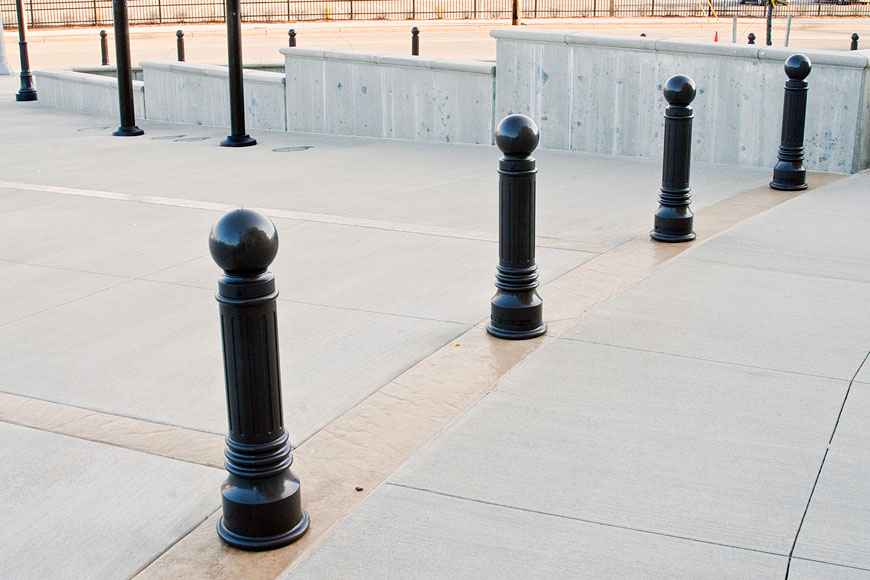
Bollards can be installed as part of a target-hardened security perimeter. To help defend against ram-raid or terrorist attack, impact-rated bollards can be used together with security bollards.
Bollards with a plainer look are often found in parking lots. Colorful, high-visibility posts are often placed around utilities meters and other infrastructure. Flexible bollards may be used as parking stops or lane dividers. Near an entrance, bike bollards may be installed for bike parking and lock-up. Retractable, removable, or fold-down bollards can be used to create authorized access spaces. For example, bollards may be lowered to allow only delivery trucks to access an area. An operable bollard can also protect a dedicated parking space.
Retractable and removable bollards are also available to create mixed-use areas. An area that’s set aside for employee parking in the winter can be transformed into outdoor lunch-room area in the summer by putting up the bollards and setting out tables.
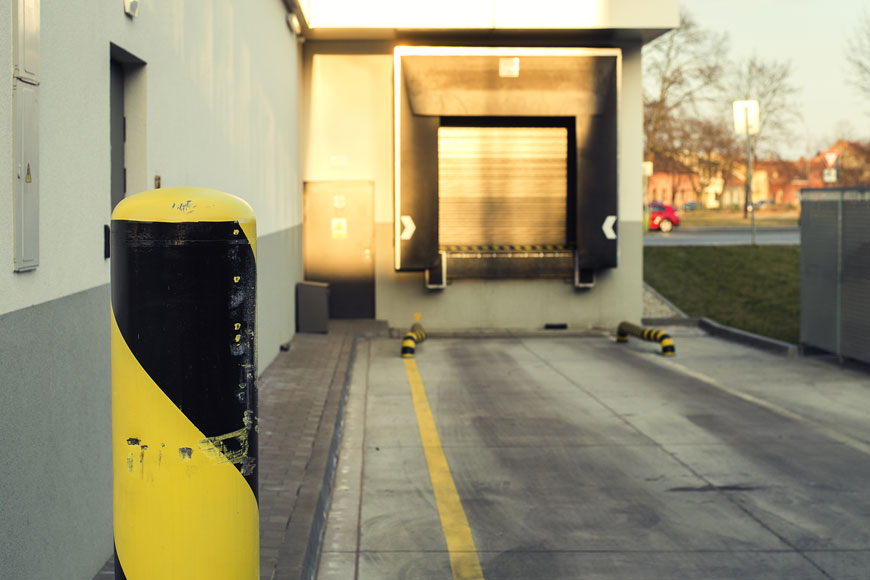
Industrial bollards for loading bays and docks
Backing a sixteen-wheeler into a loading dock requires precision and accuracy. Bollards on either side of the loading bay can provide a visual guide for drivers to get long semi-trailers into the correct position. When placed on the raised bay as visual guidance, they can be either embedded steel or bolt-down. When installed in the ground, they are usually embedded to offer more resistance.
Usually, loading bay bollards come in high-visibility colors. They are painted or covered with high-visibility plastic sleeves ringed with reflective tape. Bright markers such as these help drivers even when visibility is poor. Steel bollards may nudge a truck away from backing in at an improper angle.
Some loading bays are tucked in beside a building’s wall, so that the truck must park parallel to the large structure. Bollards installed along the inside of a loading bay ramp help protect the external wall. In addition, a bollard is very helpful at the outer corner of the building, to help prevent a tight turn from becoming a destructive one; if a truck backs in too closely it might rub the corner and do damage. A bollard will take the wear and protect the building’s structure. Structure-protecting bollards are usually made with concrete filled steel tubes, offering more resistance than surface-mounted bollards.
Installed inside the dock, bollards help guide forklifts or other industrial trucks that zip around while loading and unloading. Bolt-down bollards may be used for guidance and low speeds. Security bollards are better in tighter spaces or with faster-moving indoor machines.
Warehouse bollards for structural protection
It is busy inside a warehouse or factory. Indoor industrial trucks move over variable paths, sometimes unpredictably. Workers also sometimes appear in unexpected places, and the possibility for collision increases. So does the possibility of damage caused by collision avoidance, if a lift or jack driver has to quickly maneuver out of the way of a worker. Bollards placed around structural supports can prevent small accidents from destabilizing the building.
In some warehouses, a small set of internal portables or modular offices are set up as administration workspaces. These indoor offices are not built on foundations or into the external structure. They are more vulnerable than the main building’s supports. Bollards placed at the corners of these in-buildings protect them.
Bolt-down bollards are especially useful with these modular spaces because they can be easily relocated if the modular spaces are moved. Bolt-down bollards are low-impact; they protect against rubbing, bumping, and wear. Like all bollards, they add visual guidance.
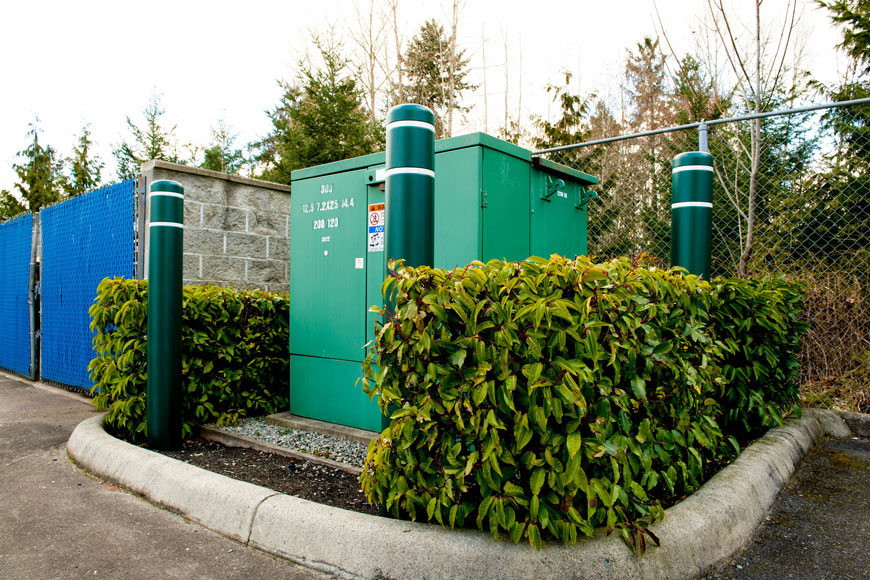
Bollards around utilities
Industrial spaces run on electricity. A power outage can severely delay production, even when backup generators are on site. Placing bollards around electrical boxes, utility meters, and other such important inputs helps prevent downtime due to utilities interruption.
Inside a warehouse, asset-protecting bolt-down bollards are usually sufficient to handle forklifts or skip jacks. Outside in a parking lot, security bollards embedded in concrete are more common. They are thicker, taller, and filled with concrete, to offer greater protection.
Protection near material handling equipment
Industrial trucks can drive freely. They often work with stationary material-handling equipment, like conveyors and cranes.
Conveyors can be in-floor, on-floor, or overhead. Bollards can surround a conveyor at or near grade to prevent it being driven into. They can also mark and protect the supports of a raised conveyor.
Bollards, with or without chain or fence between them, can also help create an authorized zone around a crane. Cranes have flexibility of movement around their base. An operator has three dimensions to work in, and the ability to navigate loads of different sizes and shapes. This freedom also means there can be unpredictable movement. Removable bollards or bollards with removable chains create authorized zones and prevent people from wandering into the crane’s path. The ability to reconfigure with chains or fences also allows variable access to industrial trucks for loading or unloading.
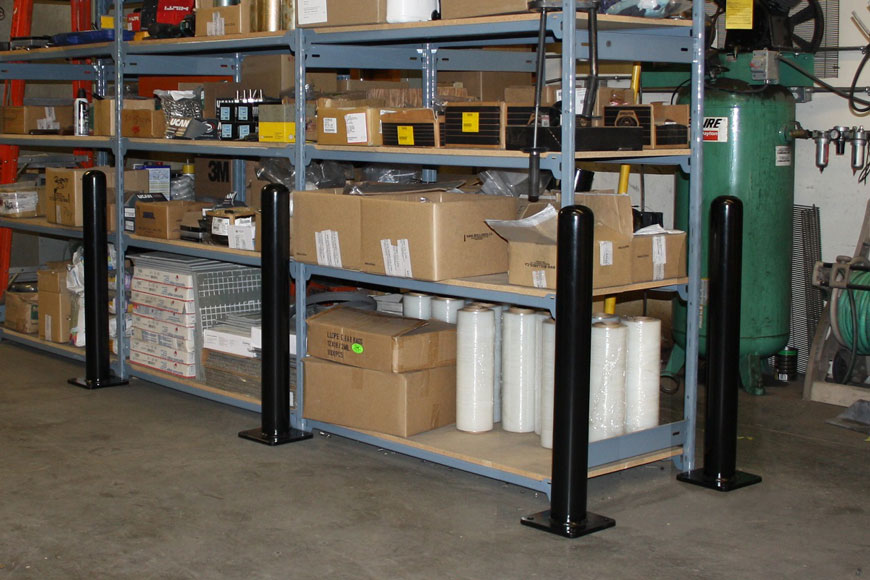
Inventory and asset protection
Asset-protecting bollards can be placed to protect shelving, on the corners of aisles, or near the support posts of racks. They also protect all types of industrial machines. Like other bollards, asset protection or bolt-down bollards can guide industrial trucks and cleaning machines away from corners and support beams. Additionally, they are installed to help prevent wear. Over time, the rubbing of wheels and carts against asset sides will distress assets. A bolt-down bollard can get scratched, dinged, dented, and scuffed—instead of the sides of expensive racking or equipment.
Industrial bollards in many roles
Heavy industry operates like a machine. Inputs are labor, smaller machines, and resources, all combined to create a product or service. Combining all these inputs safely and efficiently requires anticipating where accidents may happen. A plant manager focuses on creating a safe environment to lessen the likelihood of trouble. Factory and warehouse safety benefits everyone, by keeping people safe, and reducing downtime.
Bollards are a versatile addition to safety planning in industrial settings. Safety, security, flexible, removable, retractable, and collapsible models are all available in a variety of finishes and aesthetics. Installed thoughtfully, bollards are helpful from the outermost perimeter of the site, right to the center of the action.










